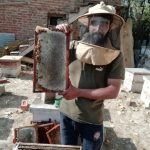A perfect storm of urbanization, environmental disruption, and crumbling public health infrastructure has turned India into a breeding ground for deadly pathogens. From Nipah virus outbreaks in Kerala to resurgent malaria in Odisha’s tribal areas, from COVID-19 devastating waves to silent superbugs killing nearly a million Indians annually—our healthcare system faces unprecedented threats.
The economic toll is equally staggering, with infectious diseases draining billions yearly. Now, with global institutions weakened, U.S. aid inconsistent, and China prioritizing hegemony over cooperation, India can no longer outsource its survival—our health security must be built at home.
Our nation faces growing health challenges that require thoughtful solutions. As diseases like Influenza, Nipah and malaria continue to emerge, we must honestly examine how we can strengthen our disease monitoring systems to better protect all citizens. The Integrated Disease Surveillance Program, while well-intentioned, has faced practical difficulties in recent years. Many dedicated health workers across states have noted challenges with timely reporting and data analysis, creating opportunities to improve how we identify emerging health threats.
We also recognize an important opportunity to better connect our animal and human health systems. Currently, many veterinary facilities operate independently from public health networks, which may delay our ability to detect diseases that can spread between animals and people. There is growing consensus among health experts that closer coordination could benefit all communities.
Budget allocations for disease monitoring have traditionally been modest compared to other priorities in animal husbandry. As we work to ensure food security through dairy and meat production, we must also find balanced ways to invest in health protections that safeguard both livestock and human populations.
Our pharmaceutical dominance masks a dangerous weakness. Despite being hailed as the ‘pharmacy of the world,’ 72% of India’s vital drug ingredients (Active Pharmaceutical Ingredients) originate from China—a dependency that brought hospitals to the brink during recent supply crises. This import reliance coincides with a crumbling diagnostic infrastructure: fewer than 30% of districts have functional testing labs, creating deadly delays as samples shuttle across states while outbreaks gain momentum. It’s like having a fancy car (our drug industry) with no fuel (local ingredients) and broken warning lights (testing system). We’re attempting to fight modern health threats with a fractured supply chain and medieval detection speeds.
The World Bank’s projection of an 8.7% GDP loss (Rs 87 lakh crore) from future pandemics captures only part of the looming crisis. Antimicrobial resistance (AMR)—a silent, slow-moving pandemic—poses an equally grave threat. AMR occurs when bacteria, viruses, fungi, and parasites evolve to resist the drugs designed to kill them, rendering once-effective treatments useless. This resistance leads to longer illnesses, higher hospitalizations, and increased mortality rates.
The spread of AMR is fueled by multiple factors: the overuse of antibiotics in livestock farming, improper disposal of antimicrobial waste, and contamination from untreated wastewater. Left unchecked, this crisis will escalate into a nightmare scenario—where common infections become deadly, routine medical procedures turn high-risk and healthcare systems buckle under the strain.
Already, superbugs claim over a million lives annually in India, while climate change accelerates the spread of resistant pathogens. Compounding these dangers are fragile medical supply chains and inadequate surveillance systems, leaving us vulnerable to outbreaks we can neither predict nor contain.
The path forward requires collective action and sustained commitment. By implementing an integrated ‘One Health’ framework, we can bridge the gaps between human, animal, and environmental health. Modern solutions like AI-powered disease surveillance and real-time data sharing offer promising tools to anticipate outbreaks through monitoring livestock movement, antimicrobial resistance patterns and screen animal products for potential pathogens.
This approach would enable targeted resource allocation, particularly in resource-limited regions, while creating a more robust early warning system. Through inter-sectoral cooperation and phased implementation, we can build a health security infrastructure that protects communities while supporting sustainable development.
Moving forward, we must prioritize strategic investments to strengthen our medical supply chains and rebuild diagnostic infrastructure across all regions. The necessary solutions and technologies are well-established, and the benefits of timely action are clear for both public health and economic stability. As we’ve seen from recent health challenges, preparedness cannot wait for crises to emerge.
By taking proactive steps now, we can build a more resilient health system that safeguards our communities while supporting sustainable development. This is an opportunity for collective action that will benefit all Indians in the years to come.
(Author is a Veterinarian and Independent Researcher. Email: [email protected])








